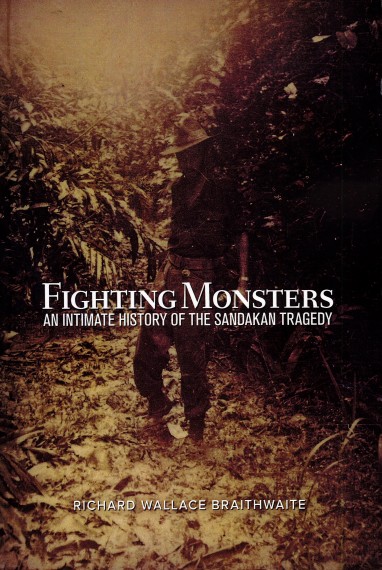Dick Braithwaite was one of the six survivors of the Sandakan death marches of 1945. He died in 1986, and his son Richard Wallace Braithwaite, after a 40-year tirelessly researched project, now tells the story. It is based on the experiences of all those who were in North Borneo during the period 1942 to 1945, and their and family lives after the end of World War II. The history is broken into four periods: active resistance (1942-43), endurance (1943-44), collapse of civilized existence (1945); and the postwar years of survivor torment, public acceptance of the story, and family and community healing and commemoration.
1787 Australian and 641 British POWs perished in three separate death marches from Sandakan westward to Ranau (about 200 km). The marchers were not only the Allied POWs, but included Javanese slave labourers, and the 20,000 Japanese soldiers ordered to move from East to West North Borneo. Local residents were not spared the terrible march toll.
Braithwaite has examined the histories, the people and the politics of the South-East Asian countries involved in considerable detail as background. Rather than dwell on the atrocities committed (by both sides), an almost forensic examination of the social mores of those involved and the circumstances they found themselves in is conducted to answer “why?”.
When peace with Japan was established, the families of the Australians who had perished wanted to know what had happened in the three and a half years they were incarcerated. The Australian Government were slow to release information to facilitate the US reconstruction of Japan, and it fell upon the surviving six, where they could, to provide the missing general information. Dick Braithwaite had been an engraver before enlisting, and was used to create small plaques for graves at Sandakan, but once the marches started, he knew little detail of individuals.
A book written by a Japanese soldier who struggled with the same physical and mental torments of the Allied prisoners is widely quoted by the author, and this record gives great insight in to the conditions both sides faced after the Allies commenced bombing Sandakan in October 1944 up to the peace declaration.
In the last three decades, there has been recognition by Australia of the sad heritage of the local natives after occupation. A concerted effort has been made by those closely involved to ensure their welfare is being looked after, as well as the erection of monuments and the development of a viable tourist trade by both sides.
Braithwaite has written a monumental work. So much information is put in front of the reader, it does require a determination to reach the end − where so much positive feeling is expressed. The Contents has the sections of each chapter laid out in detail. It has examined every possible aspect of events in Borneo, is exhaustively footnoted, relevant maps and photographs have been included along with a good bibliography and detailed index. An excellent appendix is a table of global and Sandakan events during World War II. Braithwaite’s narrative can stand very tall with any previous writings on Sandakan.
Reviewed for RUSIV by Neville Taylor, February 2017

Paperback 530pp RRP $44.00
Contact Royal United Services Institute about this article.






